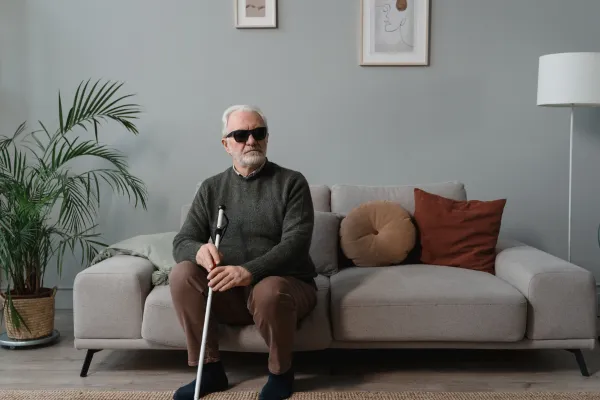
Thriving with Sensory Impairments and Processing Issues: Tips for Creating an Inclusive Home Environment
Creating an inclusive home environment that supports the well-being of individuals with sensory impairments and sensory processing issues is essential. By addressing the unique needs of people who are deaf, blind, or have sensory processing issues, such as those on the autism spectrum, you can help them feel more comfortable and at ease. In this blog post, we'll explore practical tips and strategies for designing an inclusive home environment that promotes comfort and well-being for individuals with diverse sensory needs.
Understand the unique needs of each individual
Every person with sensory impairments or processing issues has different needs and preferences. Start by understanding the specific challenges and requirements of the individual you're accommodating. This may include identifying sensory triggers, communication preferences, or mobility needs, and will help you create a tailored home environment that meets their unique needs.
Consider visual and auditory accessibility
For individuals who are deaf or hard of hearing, ensure that your home is equipped with visual cues and communication tools, such as flashing doorbells, vibrating alarm clocks, and video relay services. For those who are blind or visually impaired, provide clear pathways, tactile markers, and labels for navigation and organization.
Address sensory sensitivities
For individuals with sensory processing issues, consider creating spaces with adjustable lighting, reduced noise levels, and calming colors. Use soft furnishings and clutter-free design to minimize sensory overload. Be mindful of potential sensitivities to strong smells and adjust accordingly.
Create designated sensory spaces
Designate specific areas in the home for sensory breaks or relaxation. This may include a quiet reading nook, a cozy corner with cushions and blankets, or a dedicated sensory room with calming lights, soothing sounds, and tactile toys. Encourage the individual to use these spaces whenever they need a break from sensory stimulation.
Ensure clear communication
Promote effective communication within the home by providing tools and resources tailored to each individual's needs. This may include sign language resources, braille labels, or visual schedules and prompts for those with sensory processing issues. Establish a communication-friendly environment where everyone feels comfortable expressing their needs and preferences.
Prioritize safety and accessibility
Ensure that your home is safe and accessible for individuals with sensory impairments and processing issues. Install handrails, non-slip flooring, and appropriate lighting to minimize the risk of accidents. Make sure that essential items and controls, such as light switches, thermostats, and appliances, are easily accessible and clearly labeled.
Foster social connections and inclusion
Create opportunities for social interaction and inclusion within the home environment. Encourage family members and visitors to engage with the individual and learn about their unique sensory needs. Provide resources and education on sensory impairments and processing issues to promote understanding and empathy.
Conclusion:
Creating an inclusive home environment is essential for supporting the well-being of individuals with sensory impairments and sensory processing issues. By understanding their unique needs, addressing sensory sensitivities, promoting clear communication, and ensuring accessibility, you can create a comfortable and supportive living space that caters to diverse sensory needs.
*All funds raised from tuition, fees, and donations go back to supporting programs and services.
Terms of Service - Privacy Policy - Cookie Policy - SMS Policy

